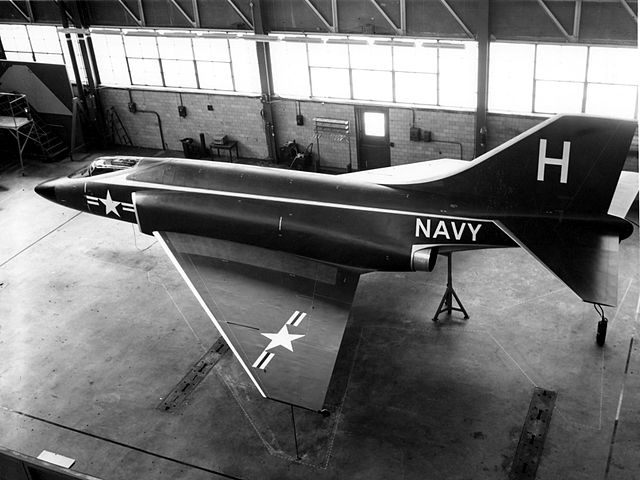 |
This is a file from the Wikimedia Commons. Information from its description page there is shown below.
Commons is a freely licensed media file repository. You can help.
|
Summary
| DescriptionMcDonnell F3H-G mockup in 1954.jpg |
Mockup of the proposed U.S. Navy McDonnell F3H-G/H. In 1953, McDonnell Aircraft began work on revising its F3H Demon fighter, seeking expanded capabilities and better performance. The company developed several projects including a variant powered by a Wright J67 engine, and variants powered by two Wright J65 engines, or two General Electric J79 engines. The J79-powered version promised a top speed of Mach 1.97. On 19 September 1953, McDonnell approached the United States Navy with a proposal for the Super Demon. Uniquely, the aircraft was to be modular — it could be fitted with one- or two-seat noses for different missions, with different nose cones to accommodate radar, photo cameras, four 20 mm cannon, or 56 FFAR unguided rockets in addition to the nine hardpoints under the wings and the fuselage. The Navy was sufficiently interested to order a full-scale mock-up of the F3H-G/H. It depicted the different sizes of the Wright J65 and General Electric J79 afterburners, with the J79 on the right side of the mockup and the J65 on the left. The further development led directly to the F4H Phantom II.
|
| Date |
18 May 1954 |
| Source |
U.S. Navy National Museum of Naval Aviation photo No. 1996.253.7320.028 |
| Author |
U.S. Navy |
Licensing
| Public domainPublic domainfalsefalse |
 |
This file is a work of a sailor or employee of the U.S. Navy, taken or made as part of that person's official duties. As a work of the U.S. federal government, the image is in the public domain. |
|
|
This file has been identified as being free of known restrictions under copyright law, including all related and neighboring rights.
|
File usage
The following pages on Schools Wikipedia link to this image (list may be incomplete):
Wikipedia for Schools is one of SOS Children's Villages' many educational projects. By supporting vulnerable children right through to adulthood, SOS Childrens Villages makes a lasting difference to the lives of thousands of people. Education is a key part of our work, and our schools provide high-quality teaching to the children in our care. Will you help another child today?




